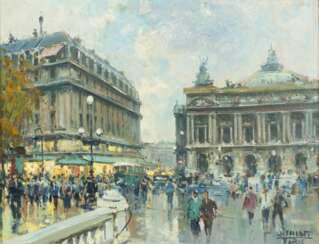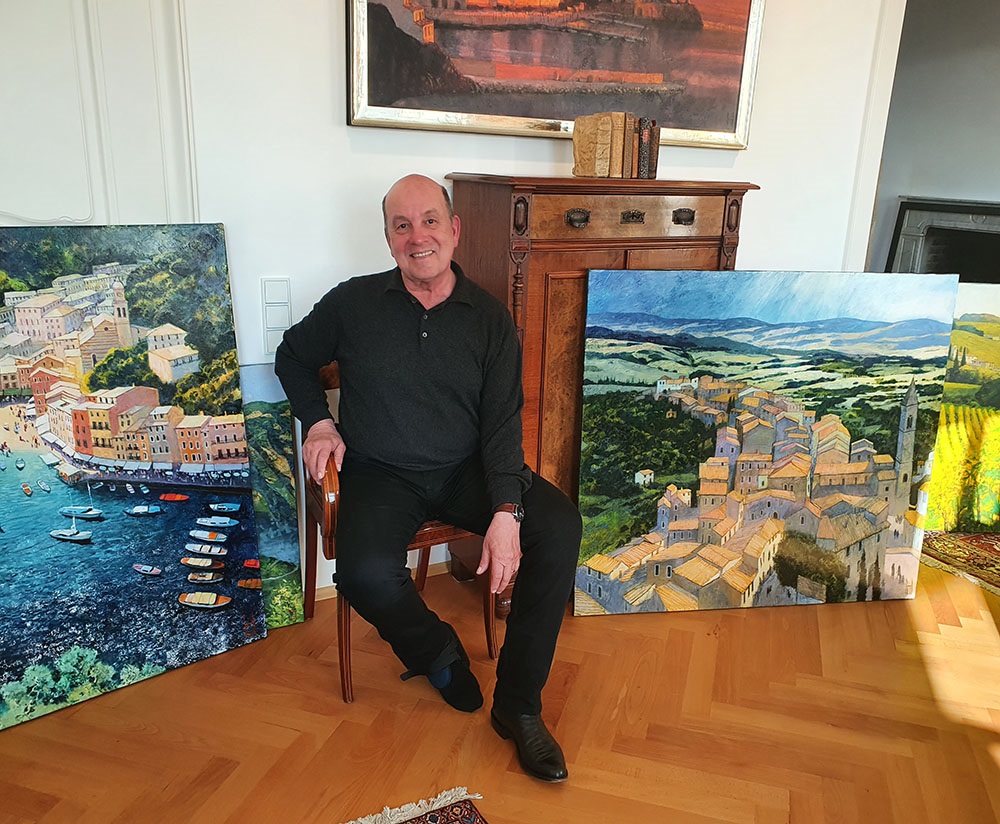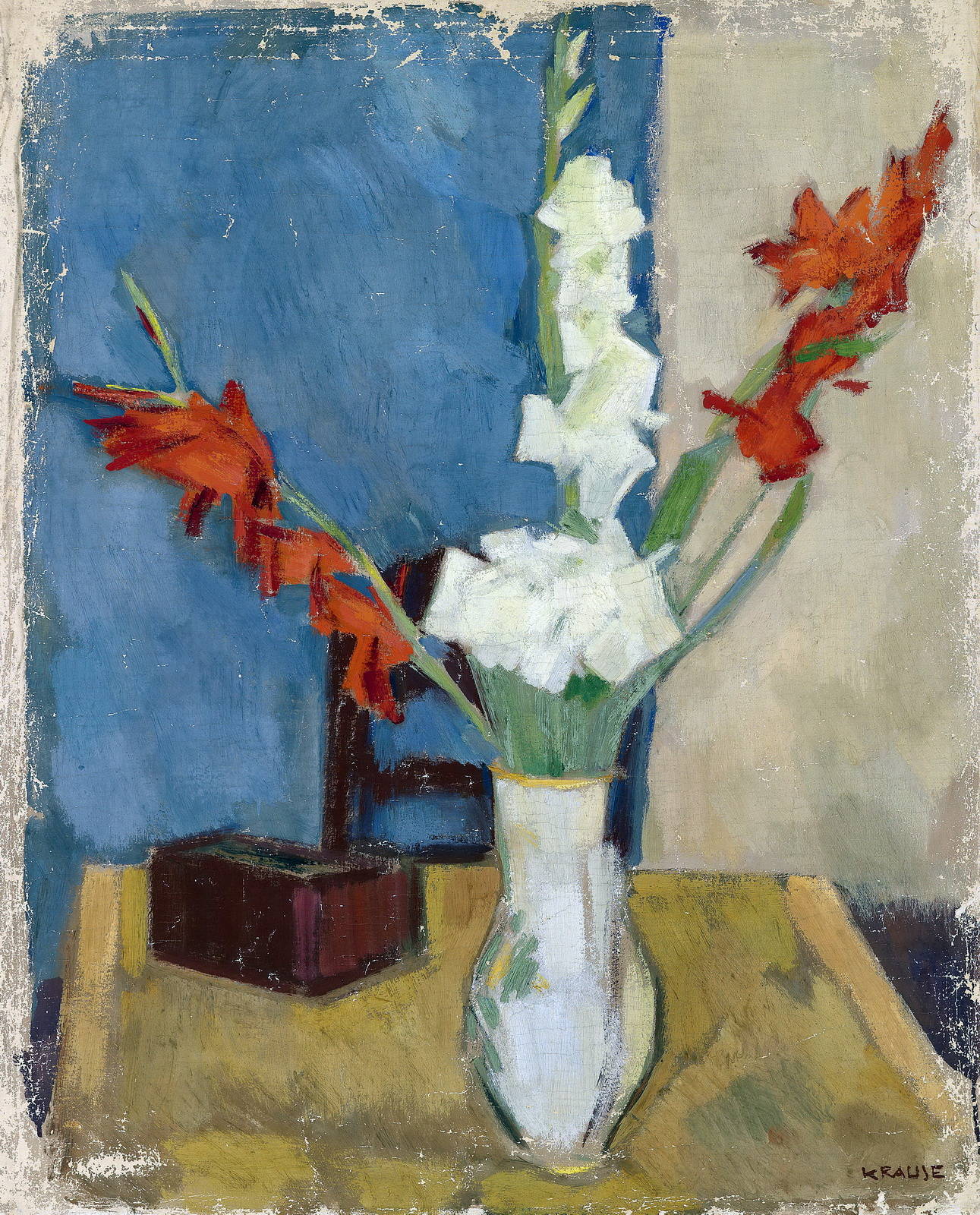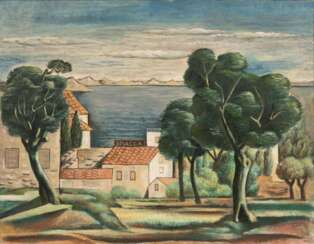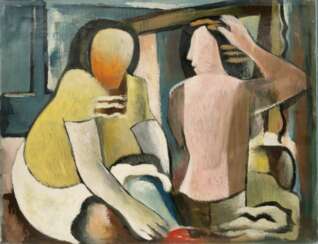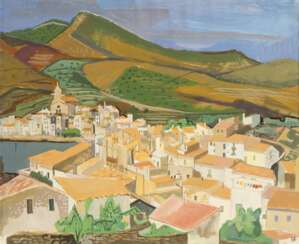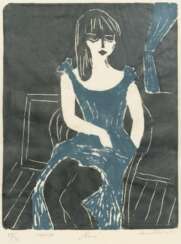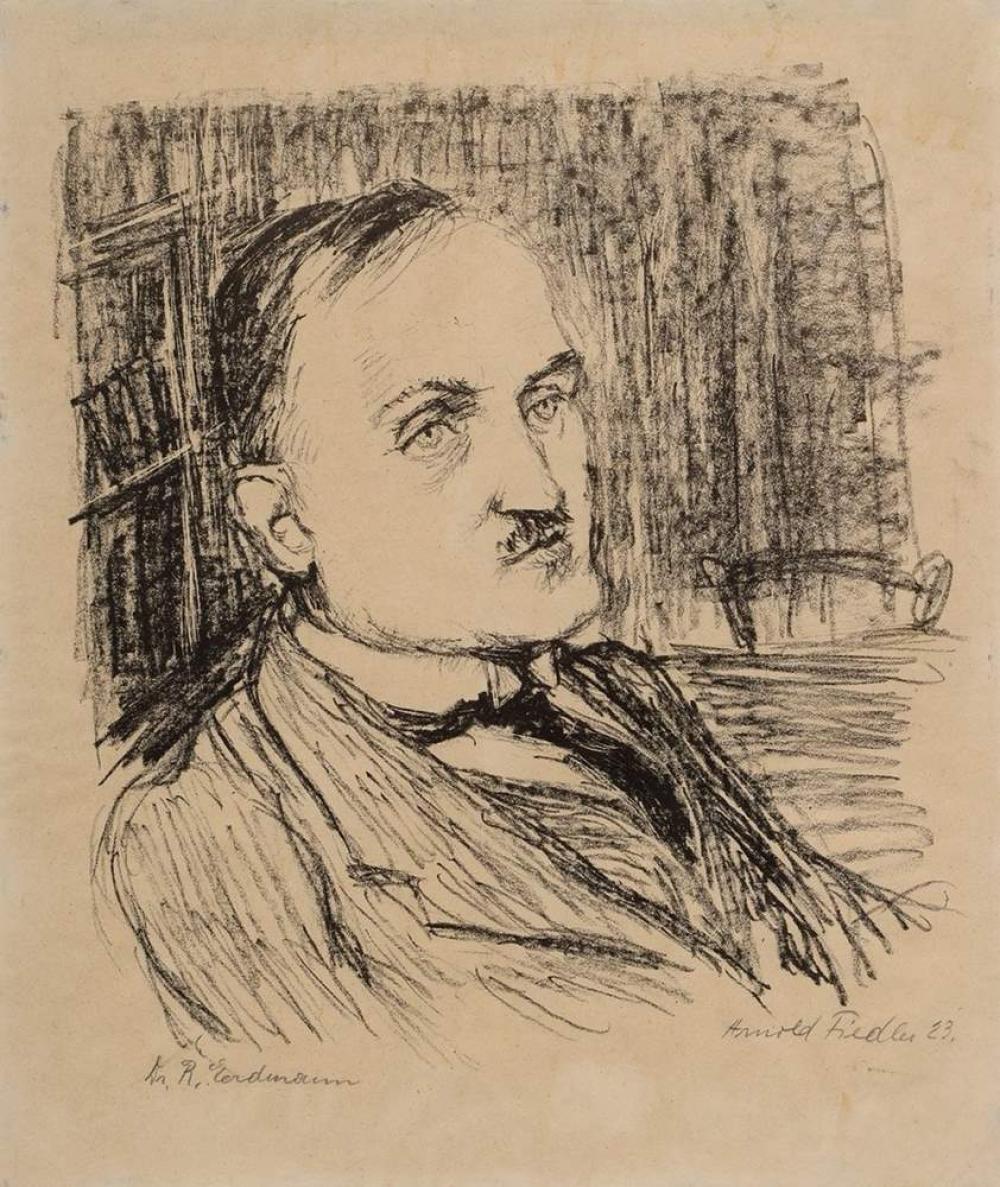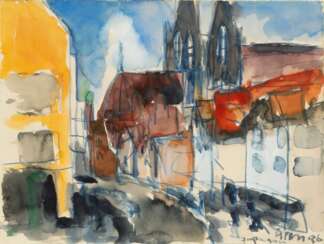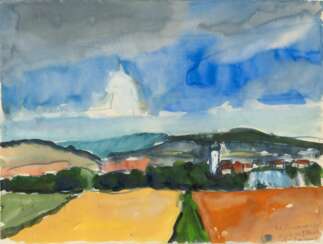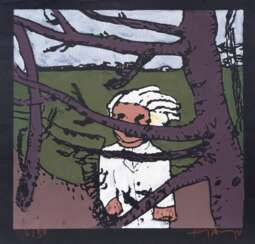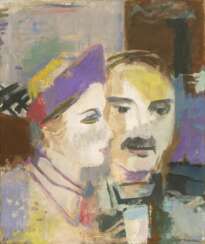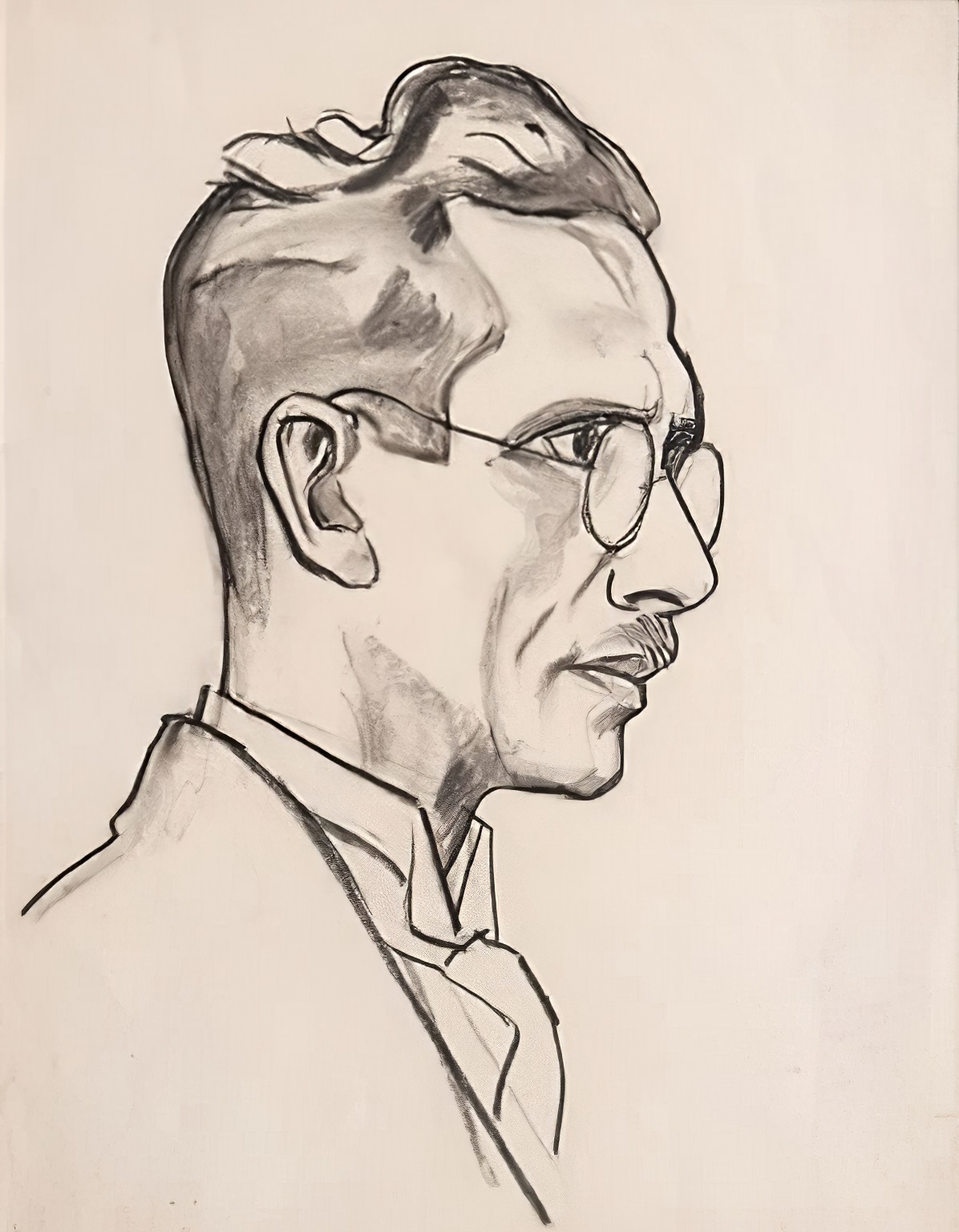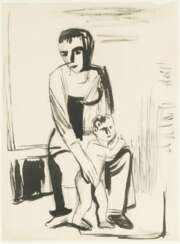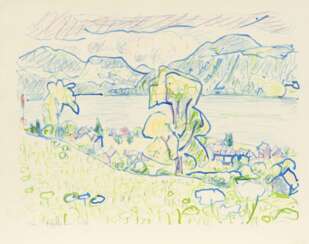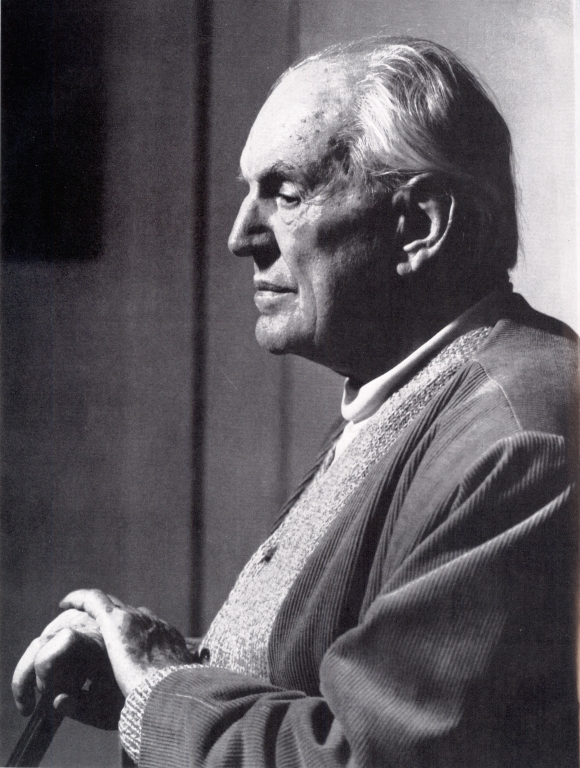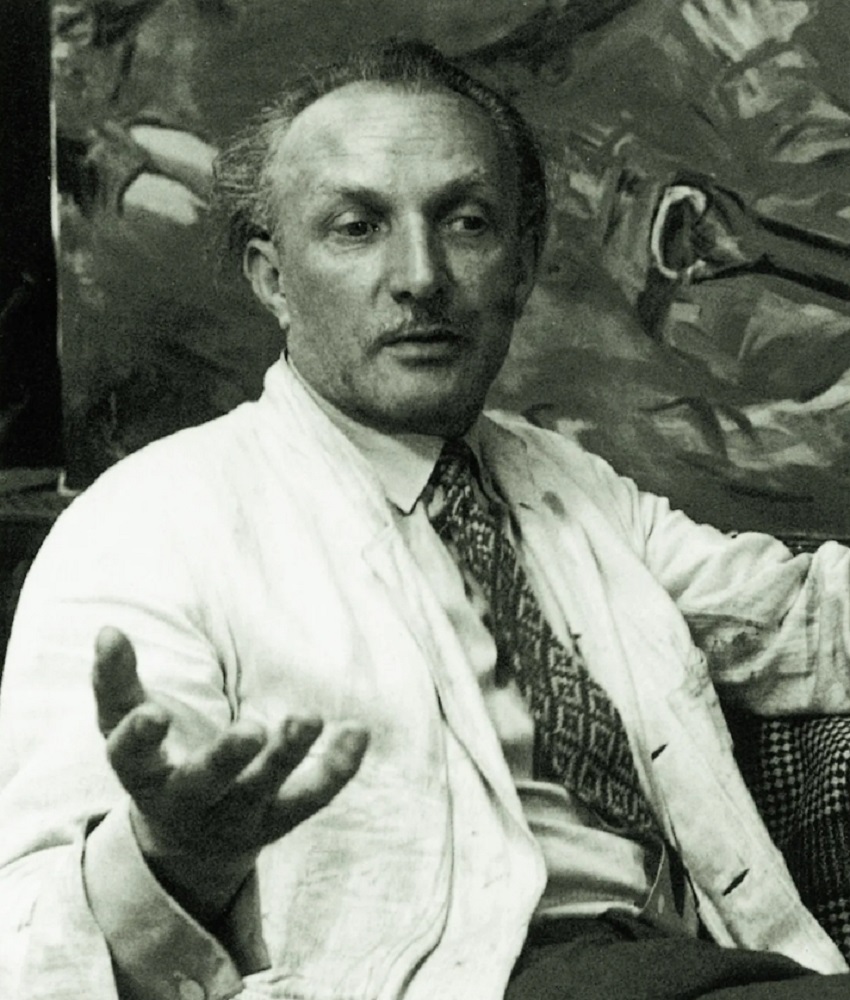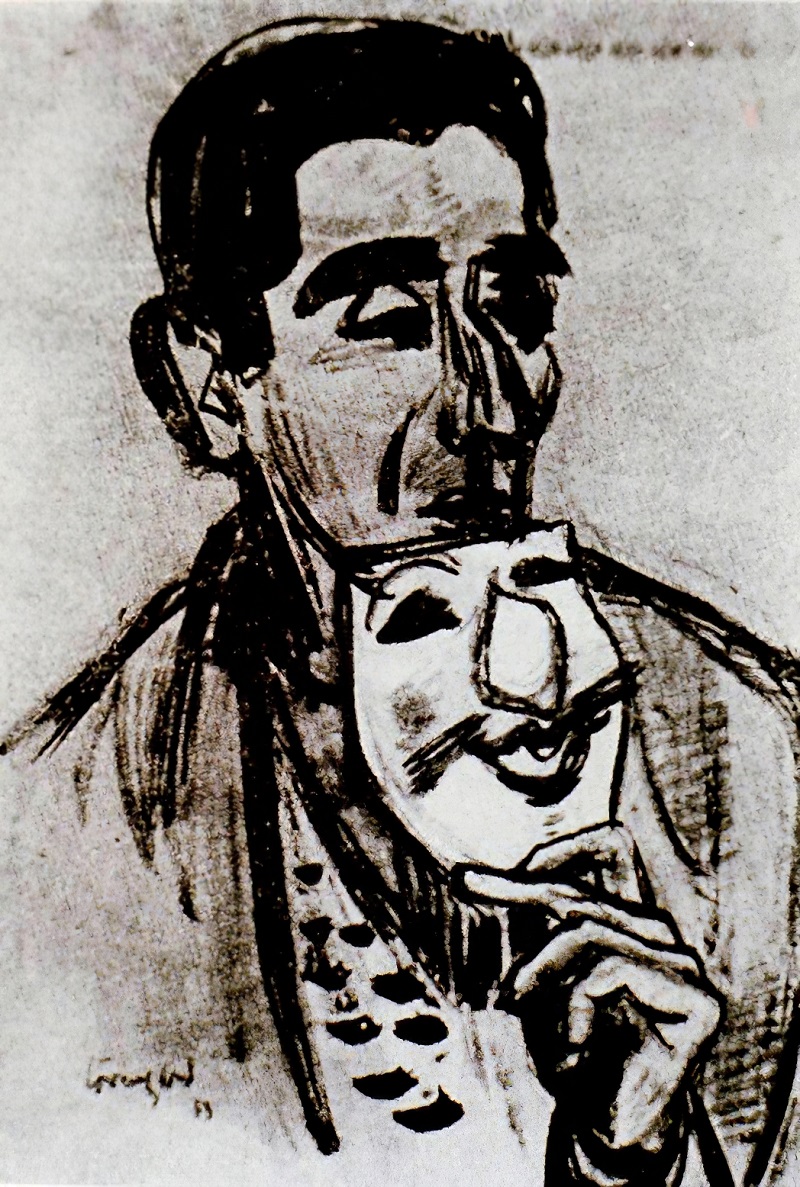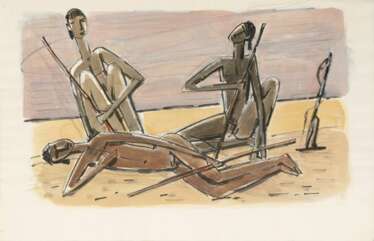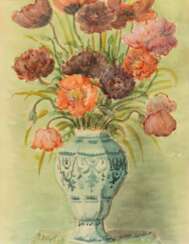
Below 3000: Kunst des 20. und 21. Jahrhunderts
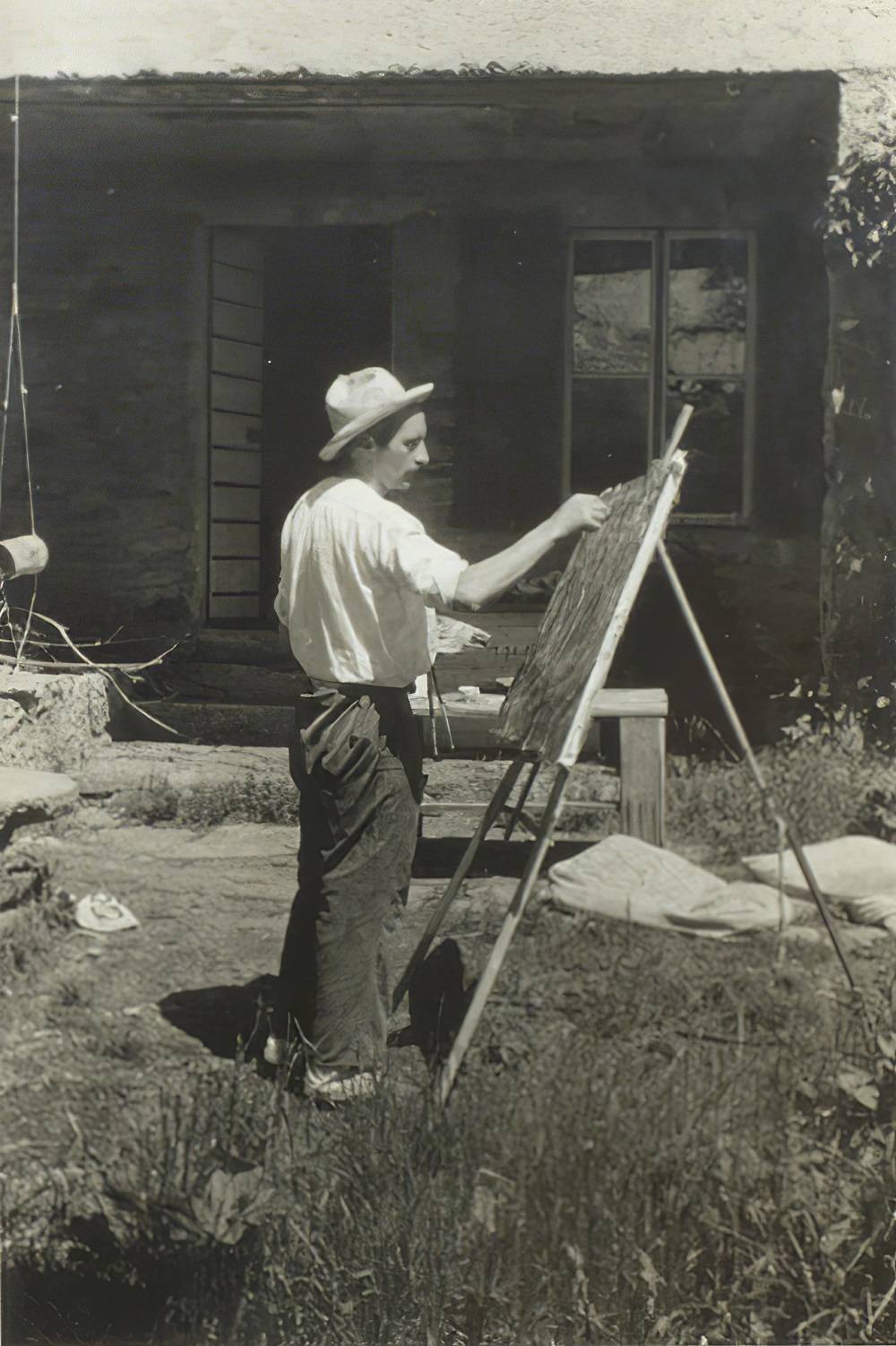
Manfred Henninger was a German painter, draughtsman, graphic artist, ceramist and university lecturer. As an artist, he belongs to the lost generation.
His works often revolve around the themes of the human figure and landscape and can be described as late impressionist.
Manfred Henninger was a member of the Deutscher Künstlerbund.
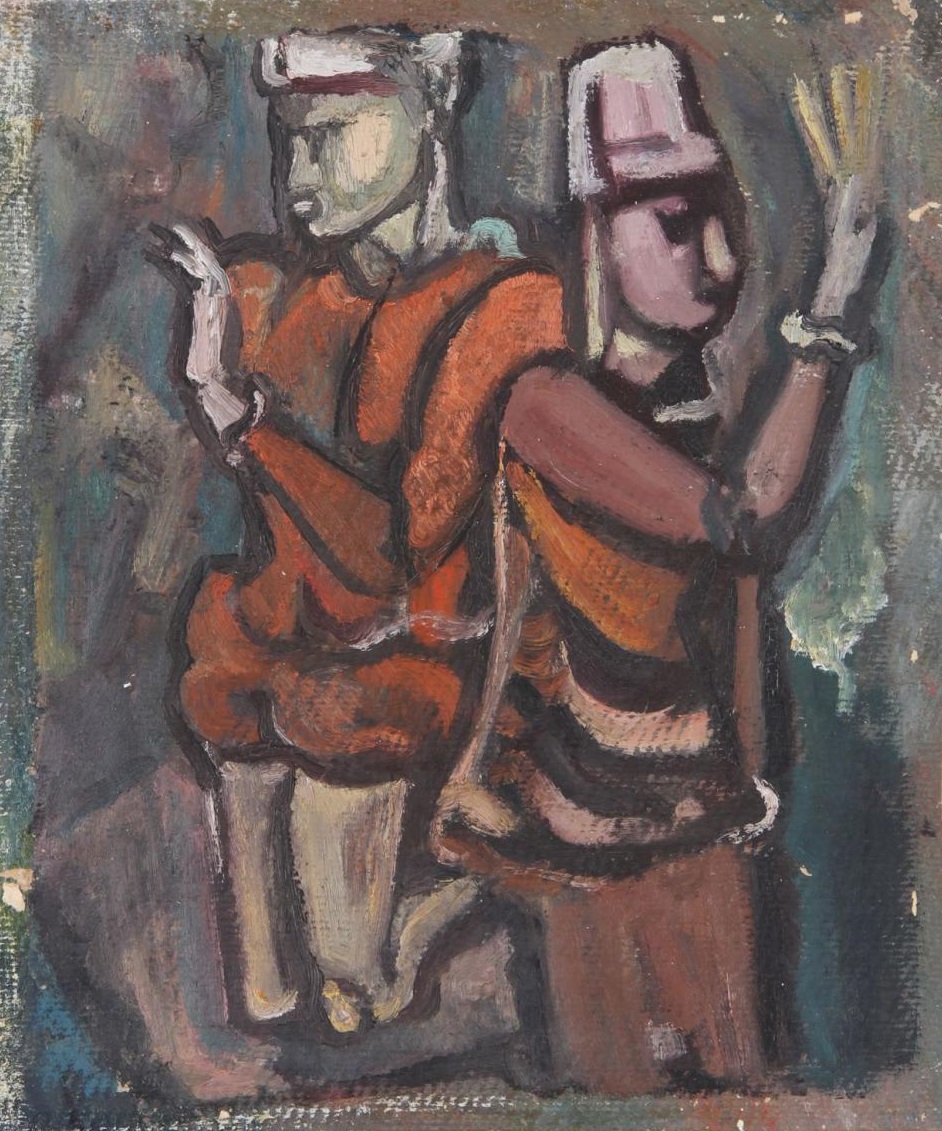
Hannes Schultze-Froitzheim, birth name Hans Werner Schultze, was a German painter and graphic artist.
Hannes Schultze-Froitzheim learned to draw from Max Bernuth, Heinrich Phieler and Hans Seiß in evening and Sunday classes at the Elberfeld Craftsmen's and Arts and Crafts School from 1920 onwards, in parallel with a commercial apprenticeship. In 1926 he transferred to the Düsseldorf Art Academy.
Schultze-Froitzheim sought the interplay of form and colour in his works. He examined the reciprocal relationship of forms to each other and often reduced them to the purely geometric body. He was also preoccupied with the interaction between light and dark forms as well as round and pointed shapes.
His stays by the sea in Scandinavia and Italy further inspired him to study and experiment with different forms. His late work is dominated by his so-called "compositions". In his mixed media he turns away completely from the figurative and uses different materials to depict the interplay between form and colour on the surface.

Hannes Schultze-Froitzheim, birth name Hans Werner Schultze, was a German painter and graphic artist.
Hannes Schultze-Froitzheim learned to draw from Max Bernuth, Heinrich Phieler and Hans Seiß in evening and Sunday classes at the Elberfeld Craftsmen's and Arts and Crafts School from 1920 onwards, in parallel with a commercial apprenticeship. In 1926 he transferred to the Düsseldorf Art Academy.
Schultze-Froitzheim sought the interplay of form and colour in his works. He examined the reciprocal relationship of forms to each other and often reduced them to the purely geometric body. He was also preoccupied with the interaction between light and dark forms as well as round and pointed shapes.
His stays by the sea in Scandinavia and Italy further inspired him to study and experiment with different forms. His late work is dominated by his so-called "compositions". In his mixed media he turns away completely from the figurative and uses different materials to depict the interplay between form and colour on the surface.

Hannes Schultze-Froitzheim, birth name Hans Werner Schultze, was a German painter and graphic artist.
Hannes Schultze-Froitzheim learned to draw from Max Bernuth, Heinrich Phieler and Hans Seiß in evening and Sunday classes at the Elberfeld Craftsmen's and Arts and Crafts School from 1920 onwards, in parallel with a commercial apprenticeship. In 1926 he transferred to the Düsseldorf Art Academy.
Schultze-Froitzheim sought the interplay of form and colour in his works. He examined the reciprocal relationship of forms to each other and often reduced them to the purely geometric body. He was also preoccupied with the interaction between light and dark forms as well as round and pointed shapes.
His stays by the sea in Scandinavia and Italy further inspired him to study and experiment with different forms. His late work is dominated by his so-called "compositions". In his mixed media he turns away completely from the figurative and uses different materials to depict the interplay between form and colour on the surface.

Hannes Schultze-Froitzheim, birth name Hans Werner Schultze, was a German painter and graphic artist.
Hannes Schultze-Froitzheim learned to draw from Max Bernuth, Heinrich Phieler and Hans Seiß in evening and Sunday classes at the Elberfeld Craftsmen's and Arts and Crafts School from 1920 onwards, in parallel with a commercial apprenticeship. In 1926 he transferred to the Düsseldorf Art Academy.
Schultze-Froitzheim sought the interplay of form and colour in his works. He examined the reciprocal relationship of forms to each other and often reduced them to the purely geometric body. He was also preoccupied with the interaction between light and dark forms as well as round and pointed shapes.
His stays by the sea in Scandinavia and Italy further inspired him to study and experiment with different forms. His late work is dominated by his so-called "compositions". In his mixed media he turns away completely from the figurative and uses different materials to depict the interplay between form and colour on the surface.
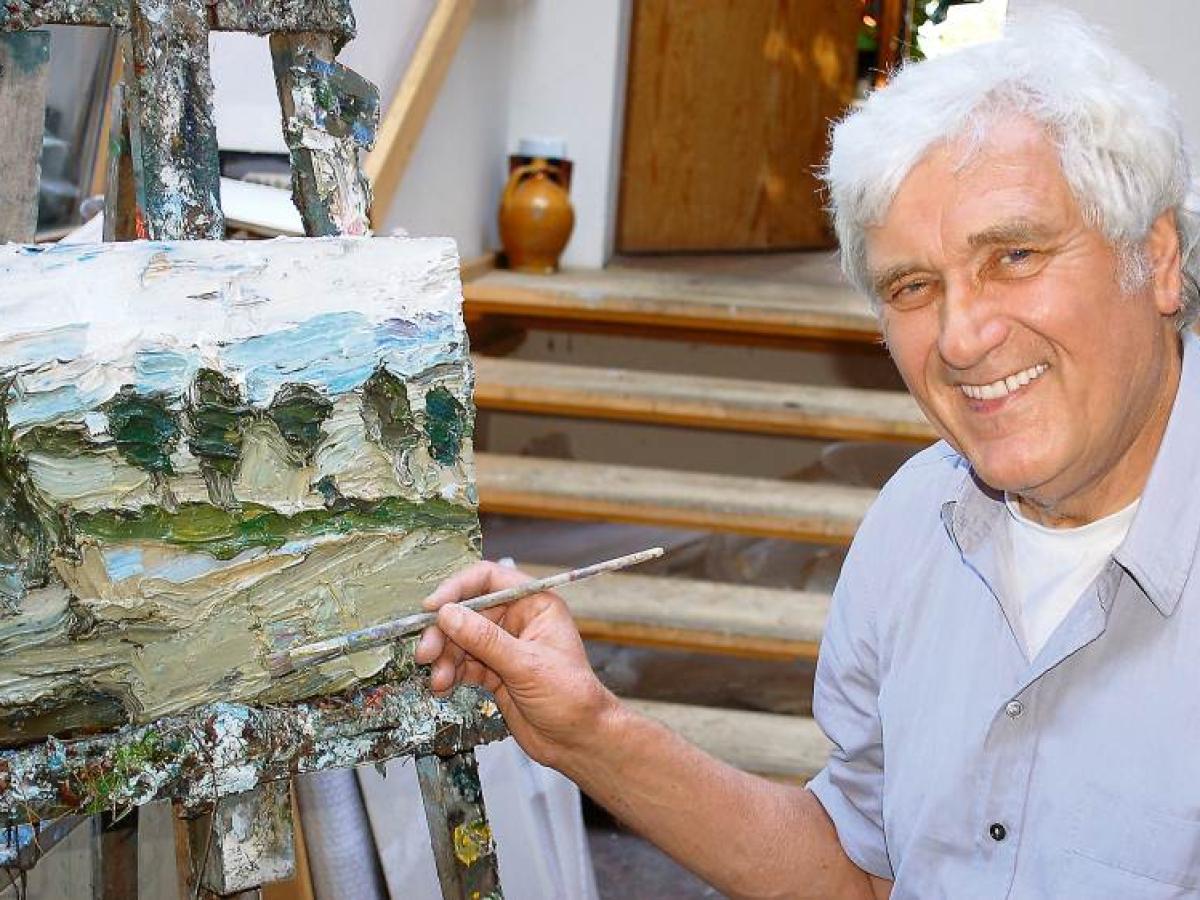
Klaus Fußmann is a contemporary German painter. He studied from 1957 to 1961 at the Folkwang University of the Arts in Essen and from 1962 to 1966 at the Berlin University of the Arts. From 1974 to 2005, he was a professor at the Berlin University of the Arts. His work has won several awards, such as the Villa Romana prize in 1972 and the Art Award of Darmstadt in 1979. Major presentations of his work include exhibitions at the Neue Nationalgalerie in Berlin, 1972; the Mathildenhöhe in Darmstadt, 1982; the Kunsthalle Emden, 1988; the Kunsthalle Bremen, 1992; and the Museum Ostwall in Dortmund, 2003. In 2005 Fußmann completed a monumental ceiling painting in the Mirror Hall of the Museum für Kunst und Gewerbe Hamburg.

Klaus Fußmann is a contemporary German painter. He studied from 1957 to 1961 at the Folkwang University of the Arts in Essen and from 1962 to 1966 at the Berlin University of the Arts. From 1974 to 2005, he was a professor at the Berlin University of the Arts. His work has won several awards, such as the Villa Romana prize in 1972 and the Art Award of Darmstadt in 1979. Major presentations of his work include exhibitions at the Neue Nationalgalerie in Berlin, 1972; the Mathildenhöhe in Darmstadt, 1982; the Kunsthalle Emden, 1988; the Kunsthalle Bremen, 1992; and the Museum Ostwall in Dortmund, 2003. In 2005 Fußmann completed a monumental ceiling painting in the Mirror Hall of the Museum für Kunst und Gewerbe Hamburg.

Klaus Fußmann is a contemporary German painter. He studied from 1957 to 1961 at the Folkwang University of the Arts in Essen and from 1962 to 1966 at the Berlin University of the Arts. From 1974 to 2005, he was a professor at the Berlin University of the Arts. His work has won several awards, such as the Villa Romana prize in 1972 and the Art Award of Darmstadt in 1979. Major presentations of his work include exhibitions at the Neue Nationalgalerie in Berlin, 1972; the Mathildenhöhe in Darmstadt, 1982; the Kunsthalle Emden, 1988; the Kunsthalle Bremen, 1992; and the Museum Ostwall in Dortmund, 2003. In 2005 Fußmann completed a monumental ceiling painting in the Mirror Hall of the Museum für Kunst und Gewerbe Hamburg.
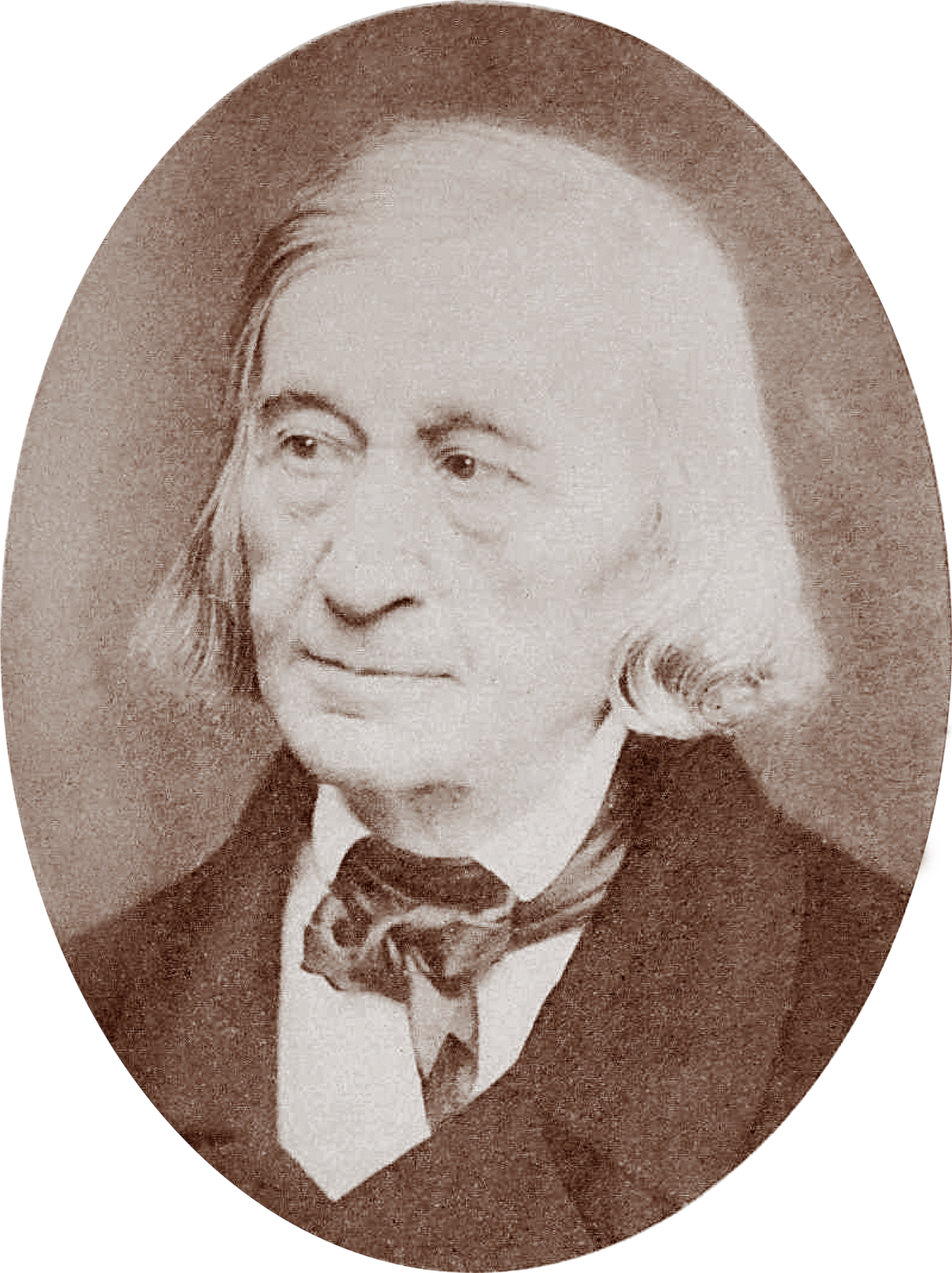
Willem Grimm was a German painter and graphic artist.
Already during his studies he made a name for himself, especially with his experimental graphics. After several guest exhibitions at the Hamburg Secession, he became an official member in 1929/30. In the early 1930s, at the age of 27, he was already one of Hamburg's most important artists.
In addition to classical genres such as portraits, landscapes and still lifes, Grimm worked from 1931 on the Rummelpott-Szenen motif, which in time became characteristic of his work.
The National Socialist repressions affected Willem Grimm less than many of his fellow artists. Still, in 1937 seven of Grimm's works were confiscated from the Kunsthalle Hamburg, the Hamburg Arts and Crafts Museum and the Nissenhaus Husum Museum as part of the "Degenerate Art" campaign and subsequently destroyed.
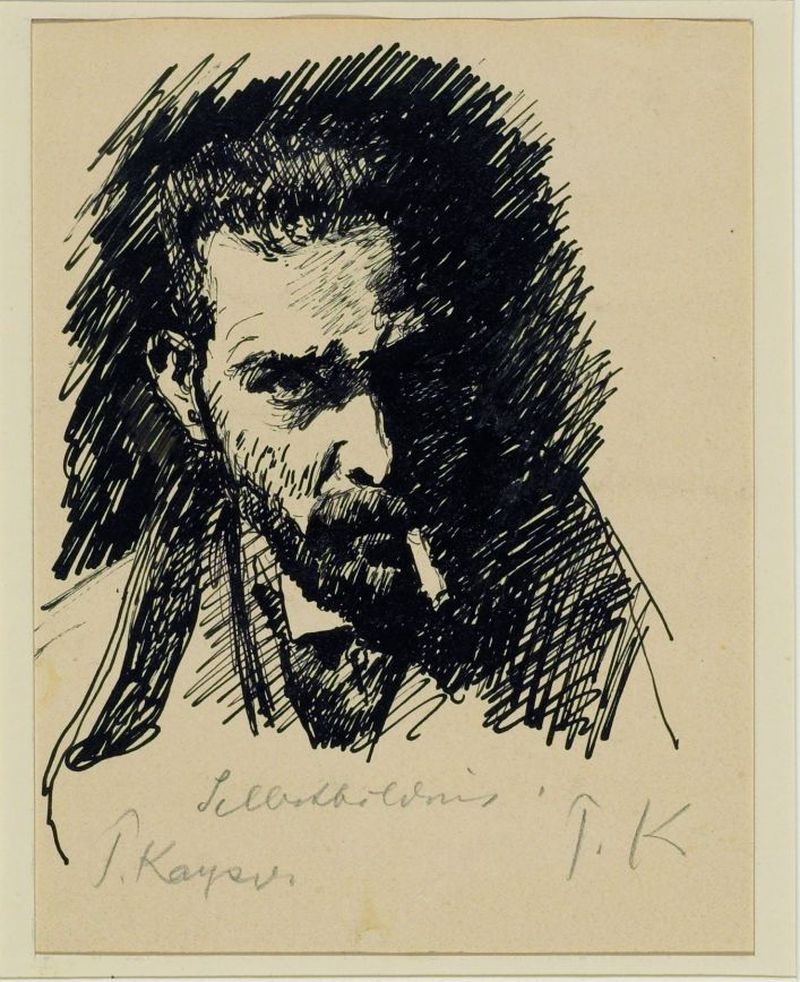
Paul Kayser was a German painter and graphic artist. After training as a painter-decorator, Kayser attended the Schools of Applied Art in Munich and Dresden.
Paul Kayser was a founding member of the Hamburg Artists' Club 1897 and the Hamburg Secession, and a member of the Hamburg Artists' Association and the Altona Artists' Association. His style was decisively influenced by Albert Marquet, whom Kaiser met in 1909.
In 1937, Kaiser's still life was confiscated from the museum in Husum as part of the Nazi "Degenerate Art" campaign.
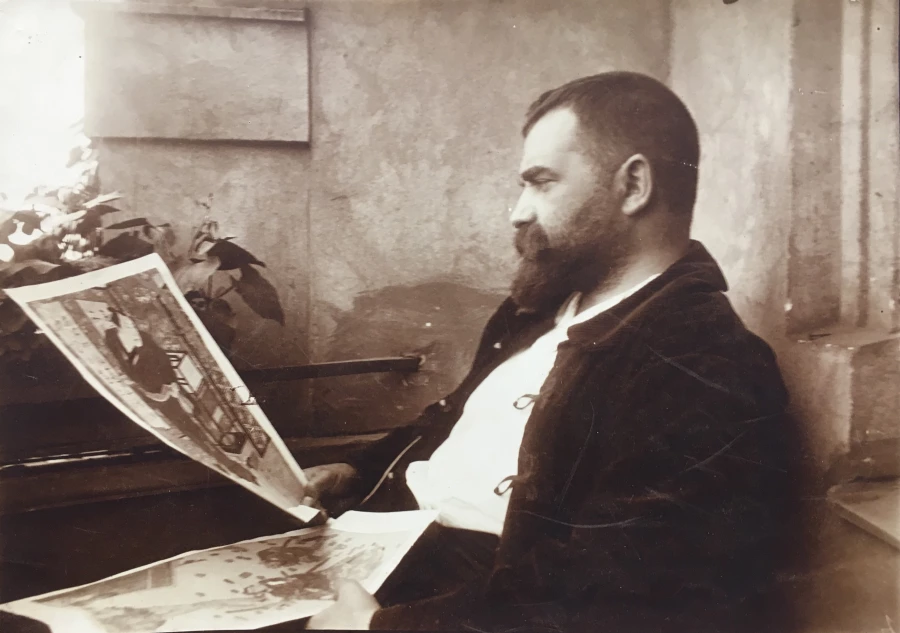
Emil Maetzel was a German architect, painter, graphic artist and sculptor.
In 1919, Maetzel was a co-founder of the Hamburg Secession, an organisation promoting modern art in northern Germany. He was also a member of the November Group, an association of expressionist artists in Berlin.

Emil Maetzel was a German architect, painter, graphic artist and sculptor.
In 1919, Maetzel was a co-founder of the Hamburg Secession, an organisation promoting modern art in northern Germany. He was also a member of the November Group, an association of expressionist artists in Berlin.
